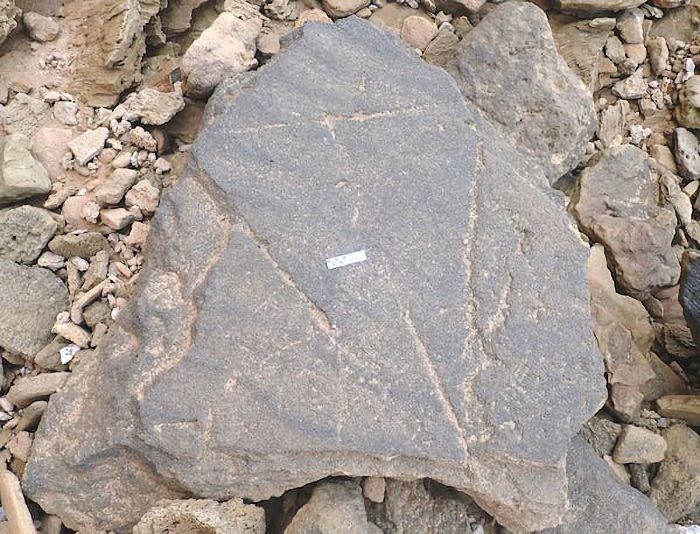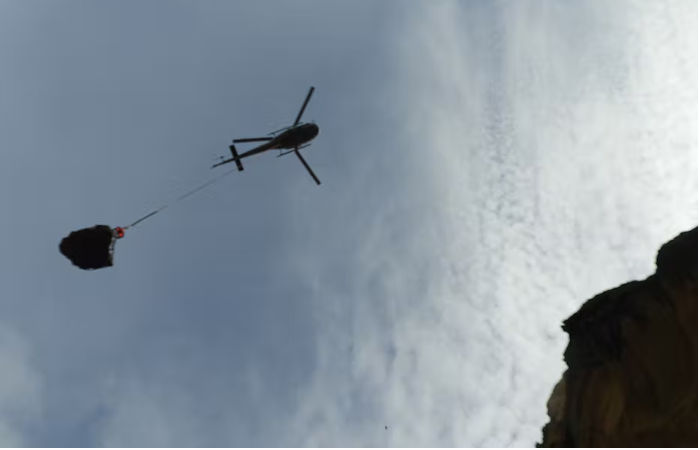Rock Stars: How A Group Of Scientists In South Africa Rescued A Rare 500 Kg Chunk Of Human History
AncientPages.com - Scientific breakthroughs can happen in the strangest ways and places. Alexander Fleming discovered penicillin because of mold growing on a Petri dish left out while he was on holiday. Chinese monks in the 9th century wanted to make a potion for immortality: instead, they discovered gunpowder.
Our own remarkable discovery happened on a rugged, remote stretch of coastline east of Still Bay on South Africa's Cape south coast. It was low tide, and three members of our ichnology team (people who study tracks and traces) were in search of newly exposed Pleistocene vertebrate tracksites in aeolianites (cemented dunes).
The larger of the two triangular geometric features (scale bar = 10 cm). Credit: Charles Helm
Ahead we saw a large rock that had tumbled down from the cliffs above. On its surface was a pattern of linear groove features in a large triangular shape, complete with an almost perfect bisecting groove. The sides of the triangle were close to a meter in length. After extensive research, we concluded that these grooves must have been made on a dune surface of unconsolidated sand by our human ancestors in the Middle Stone Age. The patterns are likely between 143,000 and 91,000 years old.
It was an important find in a significant place. Multiple lines of evidence on this coastline indicate that it's an area where our distant ancestors became truly modern, using fire as an engineering tool and creating abstract images.
But there was a problem. On a followup visit we found a smaller rock close by with a similar triangular feature. Subsequently, it was destroyed, likely by storm surges or high tides buffeting and overturning it. We knew that the larger rock inevitably awaited a similar fate if we did nothing. From our perspective this is one of the most important rocks in the world: it takes us back to our roots as a species and indicates the kind of "proto-art" we were capable of creating so long ago.
An unusual ‘rescue operation’ captured on video by Richard Webb.
The rock has subsequently been encased and placed on exhibit, with interpretive text panels. It joins similar exhibits in the museum; the grooves were an example of an ammoglyph, a term we had coined to describe a pattern created by humans in sand that is now evident in rock that has become cemented and then re-exposed.
Ascribing meaning to these geometric patterns made so long ago by our distant ancestors is not within our field of expertise. Still, we could not help but notice the resemblance of the triangular shape to a purported fertility symbol found in France and dated to around 38,000 years. Should the pattern on our rock represent the same motif, it would not be the first time that southern African discoveries had pushed back in time what has been viewed as an Upper Paleolithic Eurasian phenomenon.
A helicopter, net and a long-line cable - as well as a skilled pilot - were key to the ‘rescue’ operation. Credit: Richard Webb
Our research team now sleeps better at night, knowing that this priceless piece of our human heritage has been recovered and is available for others to see, appreciate and critique.
More to discover
Happily, there was an unexpected bonus. Beside the eroded remains of the second rock our ground crew noted a third rock surface which had not been evident previously. Near one edge it contained a distinct pair of grooves that met at an angle of 69 degrees, forming what may have been part of another triangular feature.
This is clearly an area we will return to repeatedly, in the hope that tidal forces may turn over other rocks before destroying them, and may give us an opportunity to glimpse—and perhaps recover—more ammoglyphs.
Written by Charles Helm, Research Associate, African Centre for Coastal Palaeoscience, Nelson Mandela University
and Jan Carlo De Vynck, Director and research fellow, African Centre for Coastal Palaeoscience, Nelson Mandela University, Nelson Mandela University
This article is republished from The Conversation under a Creative Commons license. Read the original article.
More From Ancient Pages
-
 Ancient Maya Saltworks: Salt Was A Commodity Or Money In Classic Maya Economy
Archaeology | Mar 23, 2021
Ancient Maya Saltworks: Salt Was A Commodity Or Money In Classic Maya Economy
Archaeology | Mar 23, 2021 -
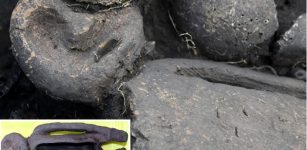 Never-Before-Seen Strange 5,000-Year-Old Clay Figurine With A Tattooed Face And Bone Mask Found In Siberia
Archaeology | Oct 2, 2020
Never-Before-Seen Strange 5,000-Year-Old Clay Figurine With A Tattooed Face And Bone Mask Found In Siberia
Archaeology | Oct 2, 2020 -
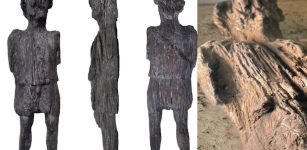 Unexpected Discovery Of Rare Ancient Roman Carved Wooden Figure In Buckinghamshire
Archaeology | Jun 11, 2022
Unexpected Discovery Of Rare Ancient Roman Carved Wooden Figure In Buckinghamshire
Archaeology | Jun 11, 2022 -
 Strange Case Of The Italian Doppelganger – A Tragedy – Part 1
Featured Stories | Oct 14, 2019
Strange Case Of The Italian Doppelganger – A Tragedy – Part 1
Featured Stories | Oct 14, 2019 -
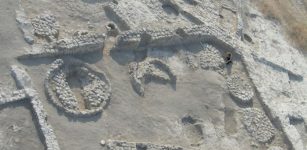 Olive Trees Were First Domesticated 7,000 Years Ago In The Jordan Valley
Archaeology | Jun 17, 2022
Olive Trees Were First Domesticated 7,000 Years Ago In The Jordan Valley
Archaeology | Jun 17, 2022 -
 Secrets Of The Assyrian Dream Book And Dream Interpretation In The Ancient Near East
Featured Stories | Aug 6, 2021
Secrets Of The Assyrian Dream Book And Dream Interpretation In The Ancient Near East
Featured Stories | Aug 6, 2021 -
 Ancient DNA Reveals Unknown Genetic Exchanges Between North And South America
Archaeology | Nov 12, 2018
Ancient DNA Reveals Unknown Genetic Exchanges Between North And South America
Archaeology | Nov 12, 2018 -
 ‘Impossible’ Ancient Knowledge Of The Gods’ Star – Mysterious Beings – Part 2
Featured Stories | Sep 4, 2021
‘Impossible’ Ancient Knowledge Of The Gods’ Star – Mysterious Beings – Part 2
Featured Stories | Sep 4, 2021 -
 When And Why Did Humans Start Using Tombstones?
Archaeology | Aug 29, 2022
When And Why Did Humans Start Using Tombstones?
Archaeology | Aug 29, 2022 -
 Traces Of An Ancient Near East Civilization In America – Lost Tribes And Unorthodox Discoveries – Part 1
Civilizations | Nov 8, 2020
Traces Of An Ancient Near East Civilization In America – Lost Tribes And Unorthodox Discoveries – Part 1
Civilizations | Nov 8, 2020 -
 On This Day In History: Independence Of Lower Canada – Today Quebec – Proclaimed On Feb 28, 1838
News | Feb 28, 2017
On This Day In History: Independence Of Lower Canada – Today Quebec – Proclaimed On Feb 28, 1838
News | Feb 28, 2017 -
 Champ Dolent “Field Of Sorrow” Menhir – Largest Standing Stone Was Built By Fairies Ancient Bretons Said
Featured Stories | Oct 10, 2022
Champ Dolent “Field Of Sorrow” Menhir – Largest Standing Stone Was Built By Fairies Ancient Bretons Said
Featured Stories | Oct 10, 2022 -
 4,000-Year-Old Tomb Altóir Na Gréine Rediscovered By Folklorist In County Kerry, Ireland
Archaeology | Jan 24, 2024
4,000-Year-Old Tomb Altóir Na Gréine Rediscovered By Folklorist In County Kerry, Ireland
Archaeology | Jan 24, 2024 -
 Yokai Hone-Onna (‘Skeleton Woman’): Deceptive Succubus That Feeds On Man’s Soul And Vitality In Japanese Folklore
Featured Stories | Jan 20, 2020
Yokai Hone-Onna (‘Skeleton Woman’): Deceptive Succubus That Feeds On Man’s Soul And Vitality In Japanese Folklore
Featured Stories | Jan 20, 2020 -
 10 Remarkable Ancient Indian Sages Familiar With Advanced Technology And Science Long Before Modern Era
Featured Stories | Oct 19, 2015
10 Remarkable Ancient Indian Sages Familiar With Advanced Technology And Science Long Before Modern Era
Featured Stories | Oct 19, 2015 -
 Hunter-Gatherer Genes Helped Early European Farmers Survive Disease – New Study
Archaeology | Mar 24, 2023
Hunter-Gatherer Genes Helped Early European Farmers Survive Disease – New Study
Archaeology | Mar 24, 2023 -
 Elk Tooth Rattlers And People’s Dance 8,000 Years Ago
Archaeology | Jun 4, 2021
Elk Tooth Rattlers And People’s Dance 8,000 Years Ago
Archaeology | Jun 4, 2021 -
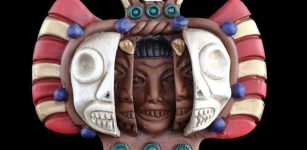 Supay: God Of Death And Underworld And Ruler Over Race Of Demons According To Inca Beliefs
Featured Stories | Jun 7, 2020
Supay: God Of Death And Underworld And Ruler Over Race Of Demons According To Inca Beliefs
Featured Stories | Jun 7, 2020 -
 Why Didn’t Alexander The Great’s Body Show Signs Of Decomposition For Several Days? A Never-Before Suggested Explanation – From Scientists
Archaeology | Jan 24, 2019
Why Didn’t Alexander The Great’s Body Show Signs Of Decomposition For Several Days? A Never-Before Suggested Explanation – From Scientists
Archaeology | Jan 24, 2019 -
 Trident: Powerful Religious Symbol Found In Many Ancient Cultures
Ancient Symbols | Dec 4, 2019
Trident: Powerful Religious Symbol Found In Many Ancient Cultures
Ancient Symbols | Dec 4, 2019

